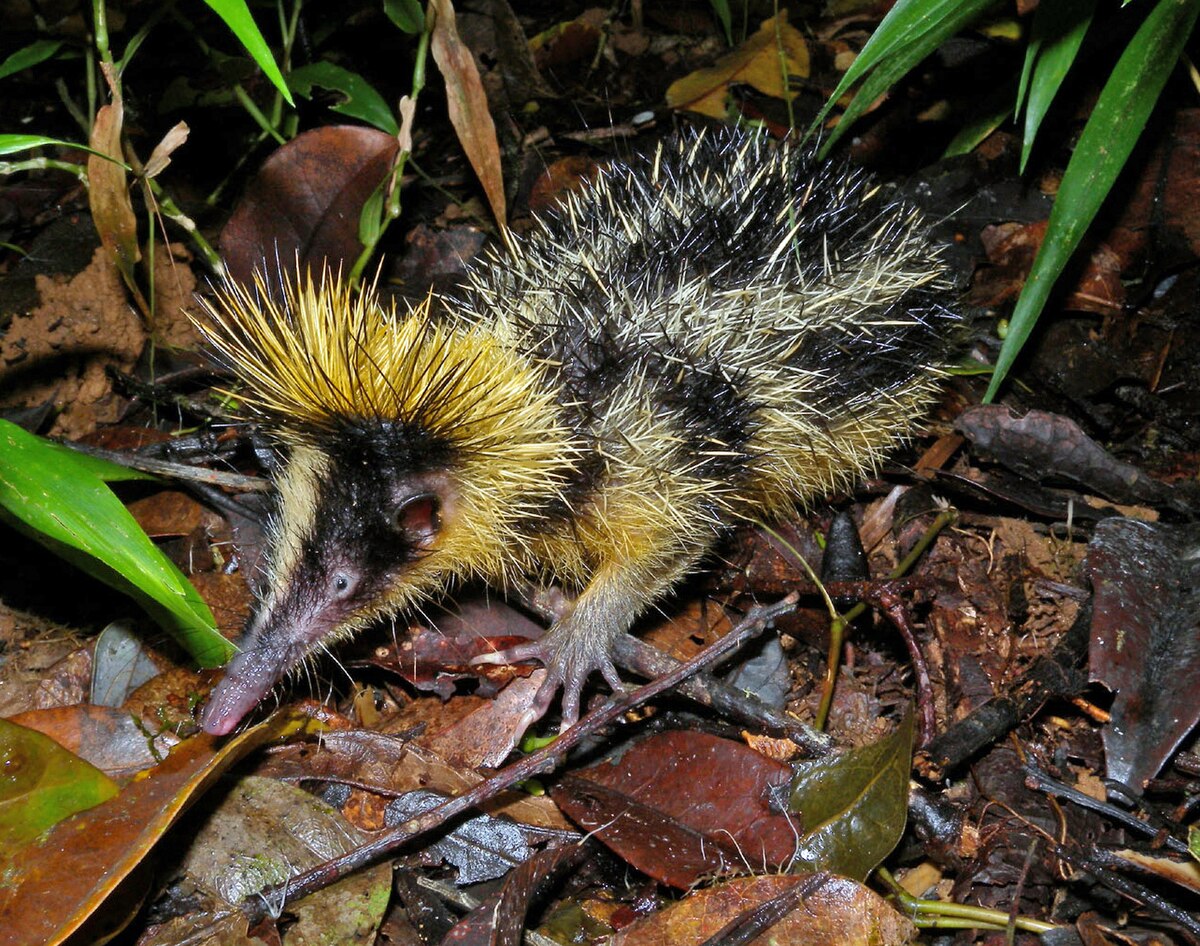Lowland Streaked Tenrec (Hemicentetes semispinosus)

Blurb from the Author: How could I not chose this cool little dude!? He looks like he could be a pokemon haha! He was just too cool not to research and blog about. Like the video I embedded at the end of my post, he looks like a mix between a bumble bee (color wise), a shrew, and a hedgehog, what a combo! They really are as cool as they look. 🙂
Lifespan: ~2.6 years (wild and captivity)
Population Size: unknown
Geographical Location: They are endemic to Madagascar, specifically the east side of the island. (like a previous species I have talked about) They are found in the tropical rainforests on the island.
Diet: They are vermivores! Meaning that they specifically eat earthworms and if the are not available they may eat various insects.
Size: 4-10 oz, 5 1/2 inches long
Conservation Status: least concern (which is great! 🙂 )
Predators: Because they are small they have a few predators such as Dumeril’s boas, Malagasy ring-tailed mongooses, Malagasy fossas (one of my past species of the week), Malagasy civets, and humans. Many of there predators are unsuccessful because of the tenrec’s pretty painful defense mechanism (quills!).
Reproduction: They mate between November and May with a 55-58 day gestation period. They produce 1-11 offspring. Babies are born without the magnificent quills of mature tenrecs. Like many species, males fight each other for the females. If the females decide they don’t want to copulate with the male they will prick them in the genitals with their spines (yikes haha).
Communication: Lowland streaked tenrecs communicate in many ways. They can erect their spines (quills), stomp their feet, bob their heads, head butt, grapple, touch noses, scent mark with excrements, click their tongues, chatter, squeak, (and the coolest way) rub their quills together to make a high pitched noise.
- Fun Facts:
- They are able to communicate with their quills!
- Babies develop spines the first day after birth
- They have soft underbellies (much like a hedgehog)
- They are closely related to the highland streaked tenrec
- They have yellow quills (quite the hair do!)
- Their quills are barbed and detachable
- They drop their body temperature to the air temperature come winter to conserve energy (they also hibernate if it gets too cold)

Websites Used for Research: http://animalia.bio/lowland-streaked-tenrec https://animaldiversity.org/accounts/Hemicentetes_semispinosus/ https://www.iucnredlist.org/species/40593/97189434
References: Kokx, K. 2009. “Hemicentetes semispinosus” (On-line), Animal Diversity Web. Accessed March 24, 2020 at https://animaldiversity.org/accounts/Hemicentetes_semispinosus/ Stephenson, P.J., Soarimalala, V. & Goodman, S. 2016. Hemicentetes semispinosus. The IUCN Red List of Threatened Species 2016: e.T40593A97189434. https://dx.doi.org/10.2305/IUCN.UK.2016-1.RLTS.T40593A97189434.en. Downloaded on 24 March 2020.